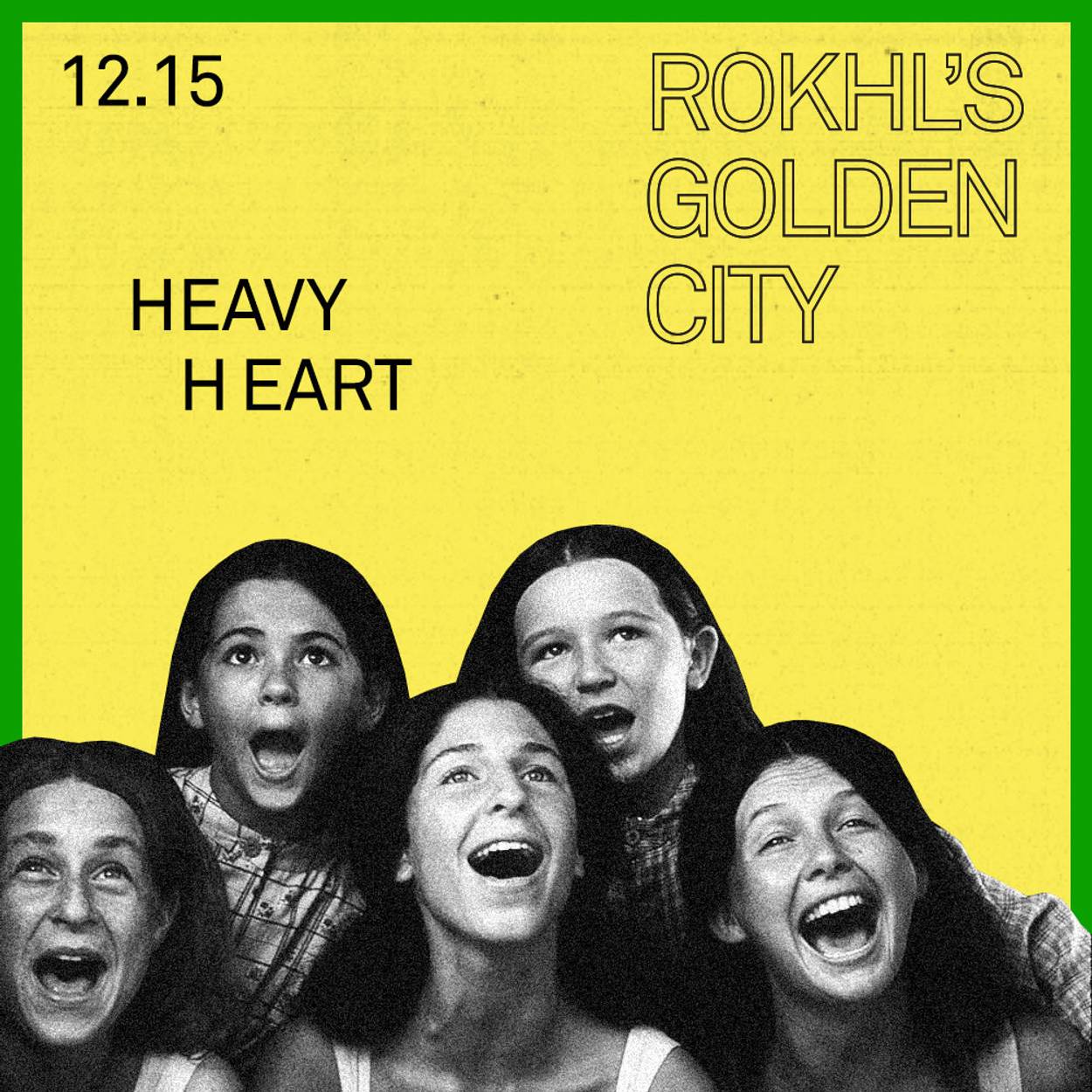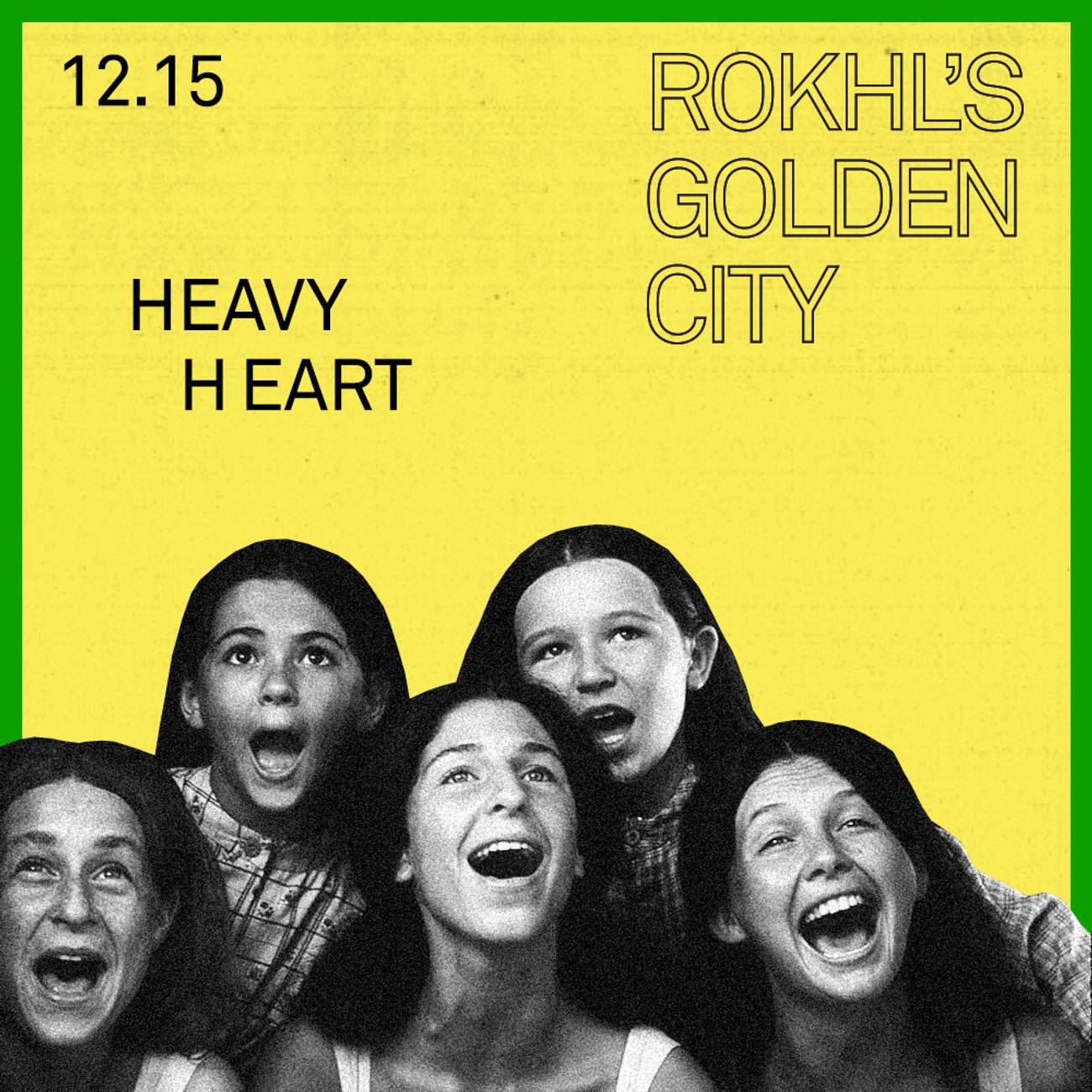Tevye’s Forgotten Daughter
A new opera recalls a Sholem Aleichem tale that was left out of ‘Fiddler,’ and opens up a world of women’s prayers called ‘tkhines’

Tablet Magazine

Tablet Magazine

Tablet Magazine

Tablet Magazine
As everyone who’s ever seen Fiddler on the Roof surely knows, and as he himself would tell you, Tevye the Dairy Man has five daughters: Tzeitel, Hodl, Chava, Shprintze, and Bielke. (I’m deliberately using the American transliterations here.) Shprintze and Bielke are present in name, though given little to do. In the original Yiddish stories, Tevye actually had seven daughters, one called Taybl and another one who never even got a name. Whether named or not, the last two daughters play no significant role in those stories, either.
Shprintze was the subject of one of Sholem Aleichem’s original Yiddish stories, though this one was far too dark to be adapted for the upbeat, American musical theater stage. In that story, Shprintze makes an ill-fated love match with the son of a wealthy widow, a boy called Arontshik. The match is thwarted by their parents, who only see two families unequal in wealth and learning, not two young people in love with each other. Devastated by Arontshik’s abrupt abandonment of her, Shprintze drowns herself.
I had long known that Shprintze’s story took this darkest turn, but I had never actually read it until my friend Alex Weiser recently sent me his own translation, which he created as part of the composing process for his opera Tevye’s Daughters. The show’s libretto is by acclaimed author Stephanie Fleischmann; Weiser and Fleischmann began their collaboration as part of the American Lyric Theater’s Composer Librettist Development Program.
Weiser and I sat down recently to talk about Tevye’s Daughters and the attention that went into every detail of its creation. Weiser is director of public programs at YIVO and by his own admission, obsessed with the rich, expansive Jewish culture embodied by YIVO. So why go back to this all-too-familiar well of Tevye and his daughters of indeterminate number? For Weiser, the answer is simple: Fiddler is so beloved, and so welcoming to audiences, that this new opera, centering Shprintze’s tragedy and intertwined with a reimagined future for her sisters, “can now be the portal into something people don’t know so well.”
The structure Weiser and Fleischmann came up with casts Khave, Beylke, and Tseytl (here I’m using the YIVO standard transliteration, as Weiser and Fleischmann do, too, in the libretto) into 1964 America. The sisters are older and comfortable, having done well with their own garment shop. They are celebrating Tseytl’s birthday at Khave’s second home in the Catskills. Tseytl’s granddaughter Rose has just broken off her own engagement and must summon the courage to speak her own truth. The action slides between present-day America and their shared past in the Ukrainian village of Boyberik.
Reading Weiser’s translation of the “Shprintse” story, I was struck by how noisy it was. Tevye’s powers of monologue are both inexhaustible and exhausting. When he’s at home, he’s busy giving orders to everyone else. The women barely get a word in edgewise. And when he and Arontshik discuss his proposed betrothal to Shprintse, the conversation is first couched as a trade of horses. “I didn’t like this conversation,” says Tevye, “what do you mean, he would trade his horse for my loser!”
Amid the clatter of Tevye’s monologue, Shprintse’s silences echo through the story:
“I took a look at my Shprintse—she was silent, her eyes alone spoke, oy, they spoke! No one understands her heart like I do … I spoke out against him, Arontshik, as I could, that he is such and such—but I saw, it was talking to a brick wall …”
How could Tevye know the first thing about what was in Shprintse’s heart? In the entire story, he is only able to be quiet and listen to Shprintse once. His protestations at the end ring all the more bitterly ironic: “In case you think that she told me so much as half a word? Lamented? Or wept some time? You don’t know Tevye’s daughters! Silent, turning inward, shrinking, wavering like a candle!” To which the reader is forced to reply, does Tevye even know Tevye’s daughters? Did he even try?
In writing Tevye’s Daughters, Weiser and Fleischmann assigned themselves a reading list. The goal was to imagine the inner world of the daughters and to reveal the stories Tevye didn’t, or couldn’t, know. They read texts by writers such as Bella Chagall, Salomea Perl, and Kadya Molodovsky. As Weiser told me, the creators asked themselves, “what else can we bring to the story to shed light on the experience of women that Tevye himself wouldn’t share?” For Weiser and Fleischmann, the answer was tkhines.
Tkhines refers to a genre of “private devotions and paraliturgical prayers in Yiddish,” as scholar Chava Weissler puts it. Similar to psalms, tkhines are written in the first person singular, which sets them apart from most of traditional Jewish liturgy. Not all tkhines were for women, but they were so popular with women that for a time, they came to be almost synonymous with the spiritual practice of Ashkenazi women. Tkhines were formulaic but flexible. There was a tkhine for practically every occasion, from going to the mikve to praying for a childless daughter to the outbreak of an epidemic.
Because we have so few documents written by Jewish women in the medieval and early modern period, and so few that reveal their inner worlds and perspectives, tkhines have become an important site of feminist scholarship, especially those works that we can authenticate as written by women. (Tkhines written by men can still give us an insight into how men felt they needed to shape women’s most intimate Jewish moments, and perhaps even a glimpse into what women must have felt when reading the tkhines themselves.)
According to Weissler, this tkhine from the mid-18th century was written by a man, for a woman who is ascertaining her menstrual status (and thus her ability to resume relations with her husband): “God and my King, you are merciful … You punished Eve, our old Mother, because she persuaded her husband to trespass against your commandment. ... So we women must suffer each time, and have our regular periods, with heavy hearts. Thus, I have had my period with a heavy heart, and with sadness, and I thank your holy Name and your judgment, and I have received it with great love from my great Friend as a punishment.” In 2023, it’s hard not to read a text like this as depressingly demeaning. Was it possible that the women who recited such a prayer found it gave voice in some way to their experience? Or did they find themselves alienated by the words men used to fill their own sacred silences? Of course, it’s impossible to ever really know.
In Tevye’s Daughters, before Shprintse walks into the lake, she laments her own inability to speak:
I am silent at the table.
Silent with my sisters,
I cannot hum to Silke
or put Tate in his place.
Silence blankets me like a shroud.
For the team creating Tevye’s Daughters, tkhines offered an artistic form that could allow their characters to finally speak from their own most painful silences, especially those left by the suicide of Shprintse, for whom Jewish law permitted only one single recitation of the Mourner’s Kaddish (due to taking her own life) and no further formal commemorations. Fleischmann took the traditional Yiddish opening lines of a tkhine and created three new prayers for the show, one tied to each of the three traditional “women’s mitsves”: taking challah, lighting shabes candles, and going to the mikve.
Between the lake of Shprintse’s past and the pond of 1964 Catskills, there is a brief repetition of the Mourner’s Kaddish. Then the sisters sing the words of this new tkhine, giving their own words to their mourning, and their shame at forgetting her:
Got mayn got,
Du her fun der gantser velt.
God, my God.
Protect us
from those who cannot cry out
for reprieve from their pain
for whom the gates of gan eydn do not open.
A few minutes later, the sisters join in a gorgeously heartbreaking passage in which they join Reyzele, the granddaughter, in the lake by the house, reimagined as a kind of mikve for the women. They sing another new tkhine:
Got undzer got,
I immerse myself. To cleanse the pain and the sorrow. To purify,
restore,
awaken.
While Jewish law may place some, like Shprintse, irretrievably outside the boundary of community, Tevye’s Daughters suggests that art, and true words of prayer, can repair even what the law has broken.
READ: Some essential books on tkhines include: Sefer Tkhines: The Forgotten Book of Common Prayer for Jewish Women, by Devra Kay; The Merit of Our Mothers: A Bilingual Anthology of Jewish Women’s Prayers, compiled and introduced by Tracey Guren Klirs; and Voices of the Matriarchs, by Chava Weissler.
TEVYE’S DAUGHTERS: Learn more about Tevye’s Daughters at the American Lyric Theater.
ALSO: The beloved Sholem Aleichem Cultural Center in the Bronx was recently defaced with antisemitic graffiti. To thank the public for its generous outpouring of support, the center will be hosting an afternoon program called “We Are Here: A Yiddish Meet and Greet” with Miryem-Khaye Seigel and Zisl Slepovitch. Sunday, Dec. 17 at 1 p.m. 3301 Bainbridge Ave., Bronx. … Also on Dec. 17, klezmer group Isle of Klezbos celebrates its 25th year and the release of a new album, Yiddish Silver Screen. Join them at Joe’s Pub for an album release concert. 8 p.m. Tickets here … Eleonore Weill and Friends will be at Barbes, in Brooklyn, Dec. 23. More information here … The Yiddish New York festival is offering a ridiculous abundance of don’t-miss live music, but I think I might be most excited for the long-awaited Yiddish Princess reunion concert, when hair metal returns to its Ashkenazi roots. Dec. 25 at Bowery Electric, 327 Bowery. More information here … And looking ahead to January, Paul Shapiro’s Midnight Minyan (klezmer/funk/jazz fusion) will be at Drom on Jan. 21. More information here.
Rokhl Kafrissen is a New York-based cultural critic and playwright.